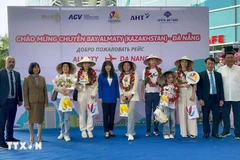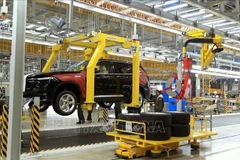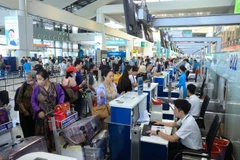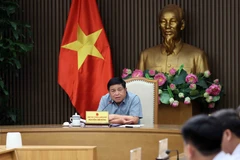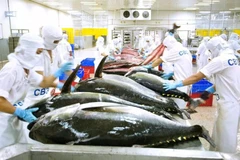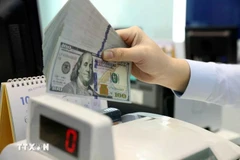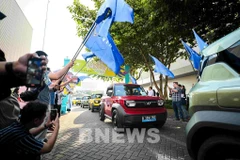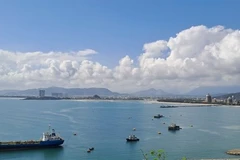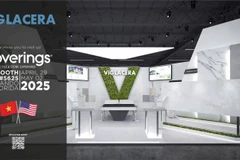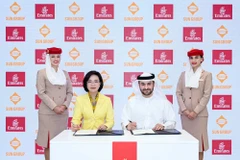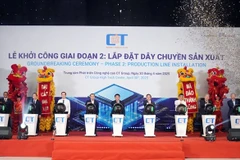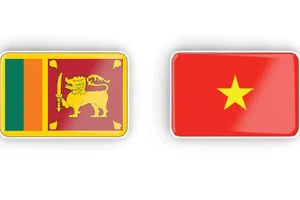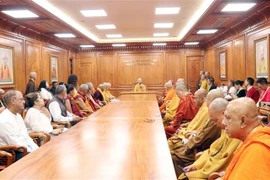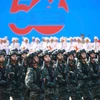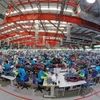The Denmark-based global corporation, aka Maersk, launched itsfirst-ever Vietnam Trade Report on December 10, reviewing the firstthree quarters of 2013. The report said the country’s economic outlookis broadly positive with a steady flow of foreign direct investment andincreasing trade volumes.
According to Maersk, with astrong foundation in place, the TPP will set the path for the nextphase of Vietnam’s economic liberalisation as a manufacturing centre ofthe Pacific Rim.
The TPP is a proposed tradeagreement under negotiation by Australia, Brunei, Chile, Canada, Japan,Malaysia, Mexico, New Zealand, Peru, Singapore, the US and Vietnam.South Korea would be the 13th. The agreement’s purported aims are tofurther liberalise Asia-Pacific economies.
Remarkingon Vietnam, Maersk Line Vietnam and Cambodia CEO Nguyen Thi Ngoc Bichsaid: “The country continues to be an attractive sourcing destinationwith competitive advantages in low labour costs, a strategicgeographical location, strong deep water port infrastructure, leadingpositions in agricultural exports, high GDP growth, long term politicalstability, and a government committed to enhancing economic stabilityand development.”
The report said Vietnam was notimmune to the global economic crisis, with Europe and US trade growthslowing to between 0-5 percent. As a result, Vietnamese exporters had todivert more of their products to other markets such as Asia, LatinAmerica and Africa.
Intra-Asia is the fastestgrowing container trade in the world and Vietnam has one of the highestgrowth rates for the intra-Asia export trade, noted Maersk.
“Asia is a hotbed of opportunity with GDP growth out-pacing the restof the world and FDI increasing year after year,” said Albert vanRensburg, country manager of MCC Transport Vietnam Cambodia. MCCTransport is an intra–Asia carrier handling all of Maersk’scontainerised cargo movements in the region.
Thereport added the next stage of Vietnam’s integration into the globaleconomy is the TPP. Among the 12 TPP nations, Vietnam offers the lowestlabour costs, making it the most competitive country, particularly inthe textile and garment industries.
Bich said MaerskLine had already seen an increase in foreign investment – specificallyfrom China, Japan, the Republic of Korea and China’s Taiwan – fromtextile manufacturers who are eager to take advantage of anticipated TPPprovisions, as they will enjoy zero preferential tariffs compared totoday’s high tax levels of 17-35 percent.
However,there are challenges such as the lack of support industries and certainrestrictions such as the “yarn forward rule of origin”.
“Vietnam is heavily dependent on imported materials to produce itsexported goods and nearly 90 percent of its raw materials and machineryare imported from other countries, including China and other non-TPPpartners,” said Marco Civardi, managing director of Damco Vietnam andCambodia. Damco, which is also part of Maersk, is a provider of freightforwarding and supply chain management services.
Vietnam willneed to build up its domestic industries over the next few years to reapthe full advantages of the TPP, he added.
Ports are one aspect of Vietnam's infrastructure that are expected to gain from the TPP, according to Maersk.
Robert Hambleton, managing director of the Cai Mep InternationalTerminal, a joint venture between Maersk’s APM Terminals business unit,Saigon Port and the Vietnam National Shipping Lines, said Cai Mepcurrently serves the US, and any partnership that increases tradebetween Vietnam and North America will likely see a need for largervessels to service those routes and will benefit business at the port.
The deep-water container terminal, located betweenVung Tau and Ho Chi Minh City, is currently operating at 30 percentcapacity, equal to two million twenty-foot equivalent units (TEU) peryear, much lower than the six million TEU capacity, due to thesupply-over-demand reality, said Hambleton.
HoweverCai Mep remains confident in Vietnam’s long-term growth and theoversupply challenge will improve over time with the country’s organicgrowth, trade pacts such as the TPP, and cascading of larger vessels, headded.-VNA


